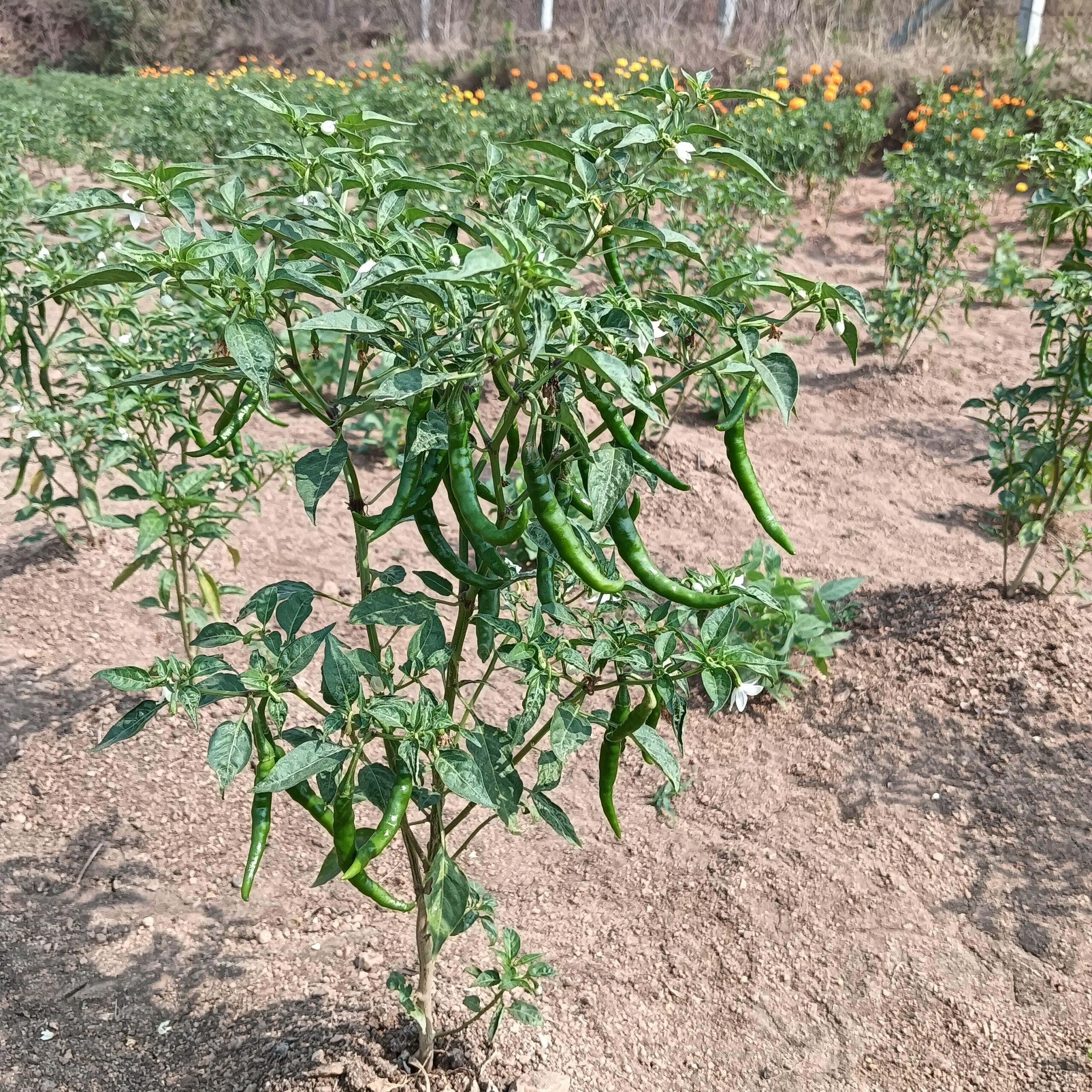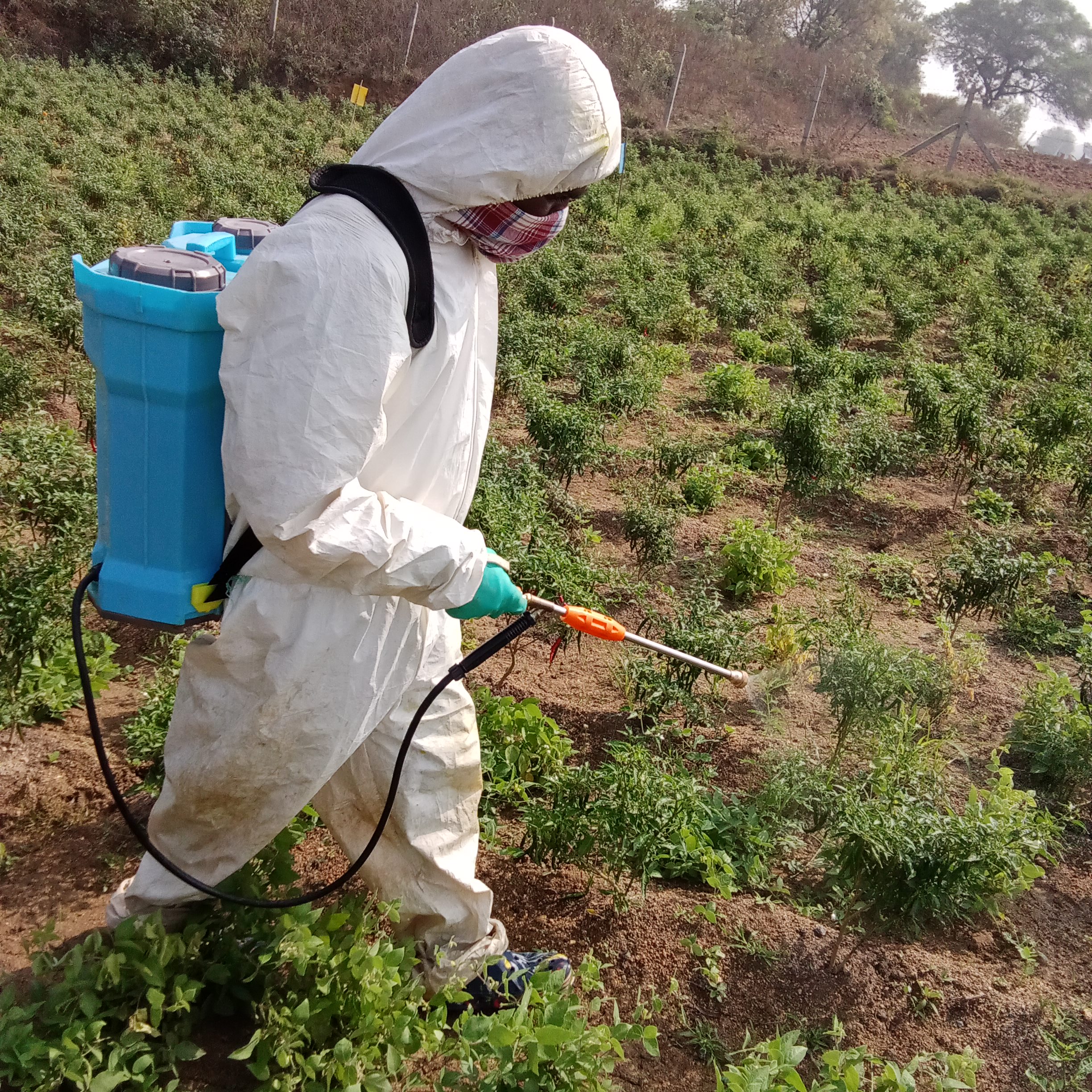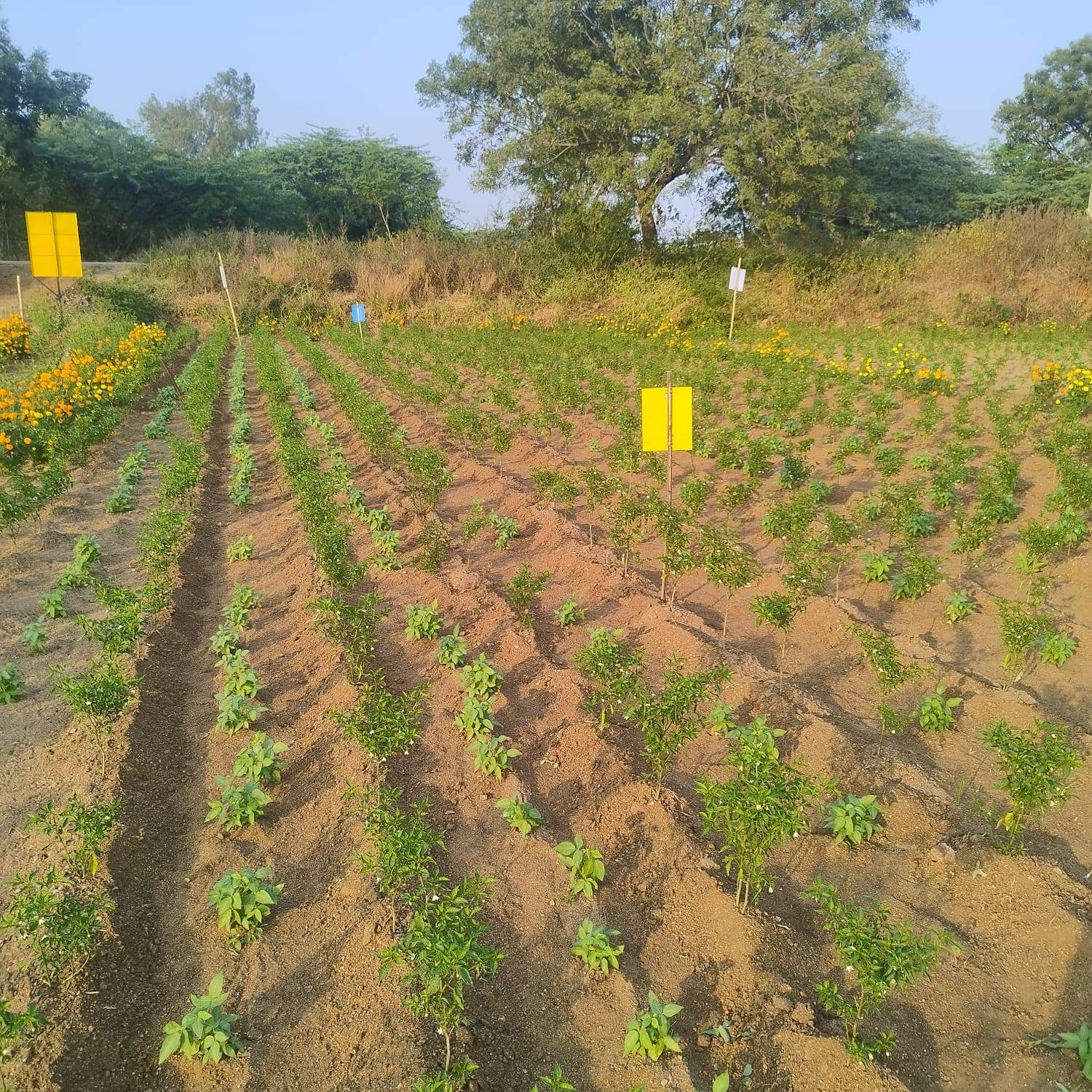A hot pepper farmer in Telangana who previously relied on intensive chemical-based pest control applied 17 synthetic pesticide sprays with over 40 different chemicals per season which developed resistance against pests and diseases. This approach, while effective in controlling pests, led to high residue levels, increased input costs, and negatively impacted soil health and biodiversity.
With the adoption of regenerative agricultural practices, the farmer drastically reduced chemical dependency while maintaining yields and crop health. Instead of 17 synthetic sprays, only one targeted EU-certified green-labeled insecticide application was used alongside biological sprays, supported by ecological pest management strategies.

- The farmer incorporated biopesticides, which naturally infect and eliminate insect pests without harming beneficial organisms. These were applied in hot pepper fields that significantly reduced early-stage pest infestations.
- Plant-derived insecticides were applied during the cropping season that controlled pests while enhancing plant resilience.
- Application of an EU-certified, green-labeled insecticide recommended by the RegenCrops App to manage thrips (Scirtothrips dorsalis) and other sucking pests controlled thrips infestation while minimizing impact on beneficial insects.
- Early Detection with RegenCrops Image Processing: The RegenCrops app enabled real-time pest monitoring through AI-driven image analysis, ensuring timely and precise intervention and recommendations based on pest Economic Threshold Levels
- Integrated Pest Monitoring Systems: A combination of traps and monitoring tools helps track and manage pest populations effectively, reducing reliance on external interventions.
- Companion and Buffer Planting: Strategically selected plants serve as natural barriers, diverting pest activity away from main crops and contributing to a balanced ecosystem.
- Crop Rotation and Diversification: Alternating different plant varieties disrupts pest cycles, enhances soil health, and strengthens long-term farm resilience.

- Reduction in Chemical Usage
Achieved a 70-80% reduction in synthetic pesticide applications - Lower Residue Levels
Reduced chemical use ensured compliance with stringent maximum residue limits (MRLs), making the produce safer for consumers.
Quality testing for 523 chemicals and 4 heavy metals against EU MRLs showed no detectable residues. - Enhanced Biodiversity
Beneficial insects and pollinators thrived due to reduced chemical exposure, improving overall field ecology. - Lower pest/disease infestation:
The pest and disease incidence reduced to almost 75% due to reduced synthetic chemicals and other regenerative practices. - Improved Soil Health
Minimal synthetic inputs preserved soil microbial activity, promoting better nutrient cycling and plant resilience along with other sustainable practices.

Through a scientific and precision-based pest management approach, the farmer successfully transitioned to a more sustainable hot pepper cultivation system. By integrating biological pest control, green chemistry, AI-driven early detection via RegenCrops, and ecological interventions, the farm achieved better yields with minimal chemical inputs. This case study demonstrates the potential of regenerative agriculture in creating resilient, profitable, and environmentally sustainable farming systems.
